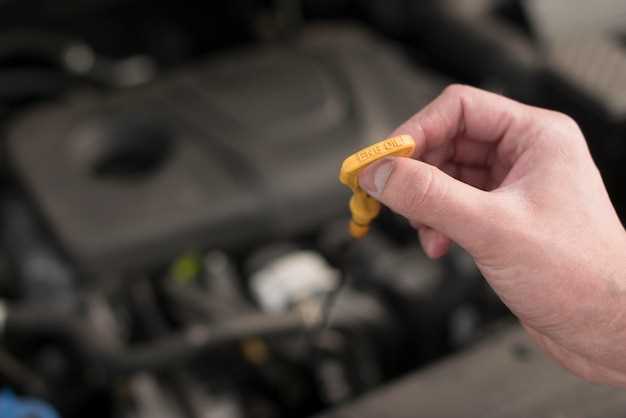
Choosing the right brake fluid for your vehicle is crucial for maintaining optimal braking performance and ensuring safety on the road. Brake fluid is a specialized hydraulic fluid that transmits force from the brake pedal to the brake components, allowing your vehicle to stop effectively. With various types of brake fluids available, understanding their properties and specifications is essential for making an informed decision.
Different Types of Brake Fluid are categorized primarily into two main types: DOT (Department of Transportation) fluids and SAE (Society of Automotive Engineers) fluids. DOT fluids are further divided into categories based on their boiling points and performance characteristics, such as DOT 3, DOT 4, and DOT 5.1. Each type has specific applications, and selecting the wrong one can lead to decreased braking efficiency and safety concerns.
Additionally, factors like moisture absorption, compatibility with vehicle materials, and operating temperature must be considered when selecting brake fluid. Moisture can significantly lower the boiling point of brake fluid, leading to potential brake failure. Therefore, regular inspection and replacement of brake fluid according to the manufacturer’s recommendations is essential for vehicle maintenance.
Understanding Different Types of Brake Fluids
Brake fluids are crucial for the proper functioning of a vehicle’s braking system. They transmute force from the brake pedal to the brake components, enabling effective stopping. There are primarily two categories of brake fluids: glycol-based fluids and mineral oil-based fluids, each with specific formulations and properties.
The most common brake fluid type is glycol-based fluid, which is further classified into different standards, primarily DOT ratings. The Department of Transportation (DOT) classifies brake fluids as DOT 3, DOT 4, DOT 5.1, and DOT 5. DOT 3 and DOT 4 are widely used in most vehicles, with DOT 4 having a higher boiling point, making it suitable for high-performance applications. DOT 5 incorporates silicone and is non-hygroscopic, which means it does not absorb moisture, but it is incompatible with ABS systems and not commonly used in modern vehicles.
Glycol-based fluids are hygroscopic, meaning they absorb moisture over time. This property can lead to a decrease in performance, notably a reduction in boiling point, risking brake fade during heavy use. Therefore, regular replacement is recommended to maintain optimal performance.
Mineral oil-based fluids, specifically referred to as brake fluid type “LHM” (used primarily in certain Citroën models), are distinct as they are not hygroscopic and tend to be less corrosive. However, they should never be mixed with glycol-based fluids due to compatibility issues, potentially leading to system failures.
When selecting the appropriate brake fluid, it is critical to consult the vehicle’s owner manual to determine the correct type and specification. Factors such as boiling point, viscosity, and chemical compatibility play important roles in ensuring the safety and performance of the braking system.
Lastly, ensure that the brake fluid you choose is certified and free from contaminants. Periodic checks and timely replacement of brake fluid are essential for maintaining the reliability and safety of your vehicle’s braking system.
Evaluating Manufacturer Recommendations for Brake Fluid

When selecting brake fluid for your vehicle, consulting the manufacturer’s recommendations is essential. Each vehicle is engineered with specific performance requirements, including optimal brake fluid type, to ensure safe and efficient operation. These recommendations can typically be found in the owner’s manual or on the manufacturer’s website.
Manufacturers categorize brake fluids by their chemical composition and performance attributes, generally adhering to standards such as DOT (Department of Transportation) ratings. Common classifications include DOT 3, DOT 4, and DOT 5, each with distinct boiling points and moisture absorption properties. Recognizing the appropriate specification is critical to maintaining the integrity of your braking system.
Moreover, it’s important to take note of the specific requirements for your vehicle. For instance, some vehicles equipped with anti-lock braking systems (ABS) may require synthetic fluids that offer higher boiling points and better moisture resistance. Following the manufacturer’s recommendations ensures that the brake fluid you choose will not compromise the system’s performance, especially under extreme driving conditions.
Additionally, heed any recommendations regarding fluid replacement intervals. Brake fluid can absorb moisture over time, leading to reduced performance and potential brake failure. Adhering to the manufacturer’s advice on when to change your brake fluid will prolong the lifespan of your braking system and enhance safety.
Finally, consult with a certified mechanic if you have any uncertainties about which brake fluid to use. They can provide insights tailored to your specific vehicle model and driving habits, ensuring you make an informed decision that aligns with the manufacturer’s guidelines.
Identifying Signs of Brake Fluid Degradation

Recognizing the signs of brake fluid degradation is crucial for maintaining the safety and efficiency of your vehicle’s braking system. Brake fluid can deteriorate over time due to factors such as moisture absorption, contamination, and thermal breakdown, which can lead to a compromised braking performance.
One common indicator of degraded brake fluid is a change in color. Fresh brake fluid is typically clear or slightly amber. If you notice that it has turned dark or cloudy, it may be contaminated or aged, indicating it needs to be replaced. Additionally, the presence of debris or particles in the fluid can signal that it is no longer performing effectively.
Another sign to watch for is a decrease in braking performance. If you experience a spongy or soft brake pedal feel, this can suggest that air has entered the brake lines, potentially due to moisture in the brake fluid. Similarly, if you notice a longer stopping distance or an unusual noise when braking, these symptoms can also point to the degradation of the fluid.
Corrosion can also manifest as physical signs on brake components. If you observe rust or corrosion on brake lines and other parts, this may indicate that moisture has compromised the brake fluid, leading to rust formation. Regular inspection of these components can help identify issues early on.
Lastly, if you frequently have to top off your brake fluid, it could be a sign of leaks or that the fluid is losing its effectiveness. Brake fluid should not need regular replenishment; ongoing loss points to underlying problems that must be addressed promptly.

